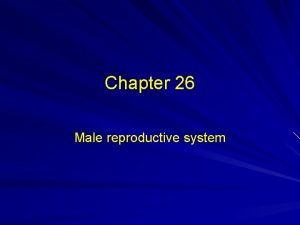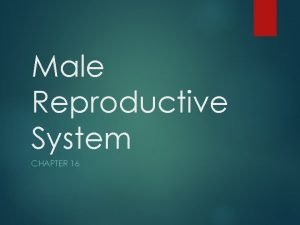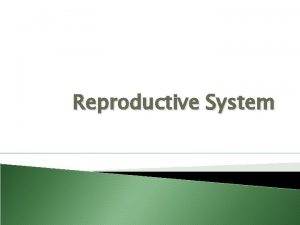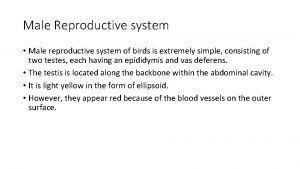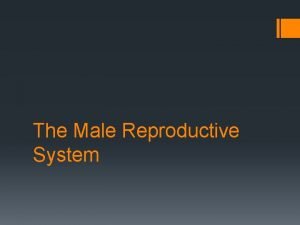Male Reproductive System Introduction The male sex cell










- Slides: 10

Male Reproductive System

Introduction • The male sex cell is called a spermatozoon, or sperm cell. • The sperm cell carries its nuclear hereditary material, or chromosomes, in its head region. • The tail consists of a flagellum, which makes the sperm cell mobile. Only one spermatozoon out of 300 million sperm cells released during ejaculation can fertilize a single female ovum. • If more than one egg is present in the fallopian tubes during ejaculation, multiple fertilizations are possible.

Introduction • Twins resulting from the fertilization of separate ova by separate sperm cells are called fraternal twins (2 separate amniotic sacs). • Twins resulting from the fertilization of a single egg by a single sperm are called identical twins. • The organs of the male reproductive system are designed to produce and release billions of sperm cells throughout the man’s lifetime. • The hormone called testosterone is responsible for the bodily characteristics of the male (such as beard, pubic hair, and deeper voice).

Anatomy Internal structure of the testis and the epididymis

What Makes Up Semen? Fluid From: Cowper’s Gland (aka bulbourethral gland) Seminal Vesicle. Prostate Gland. SPERM (if no vasectomy)

Anatomy • The passage of sperm from the seminiferous tubules to the outside of the body

Pathologic Conditions

Pathologic Conditions Circumcision: *Removal of the prepuce Hypospadias: *Surgical repair involves exciding a portion of the prepuce, wrapping it around a catheter, suturing it to the distal part of the urethra, bringing it to the end of the penis

Laboratory Tests and Clinical Procedures Laboratory tests ØPSA test- Produced by cells within prostate gland. High levels associated w/ enlargement & may be sign of cancer. ØSemen analysis- sperm are counted for motility & shape, vasectomy effectiveness, sperm count less than 20 million/ml =sterile.

Laboratory Tests and Clinical Procedures Ø Transurethral resection of the prostate—TURP; resectoscope contains light, valves to control fluid, and electrical loop to remove tissue. Clinical procedures ØVasectomy
